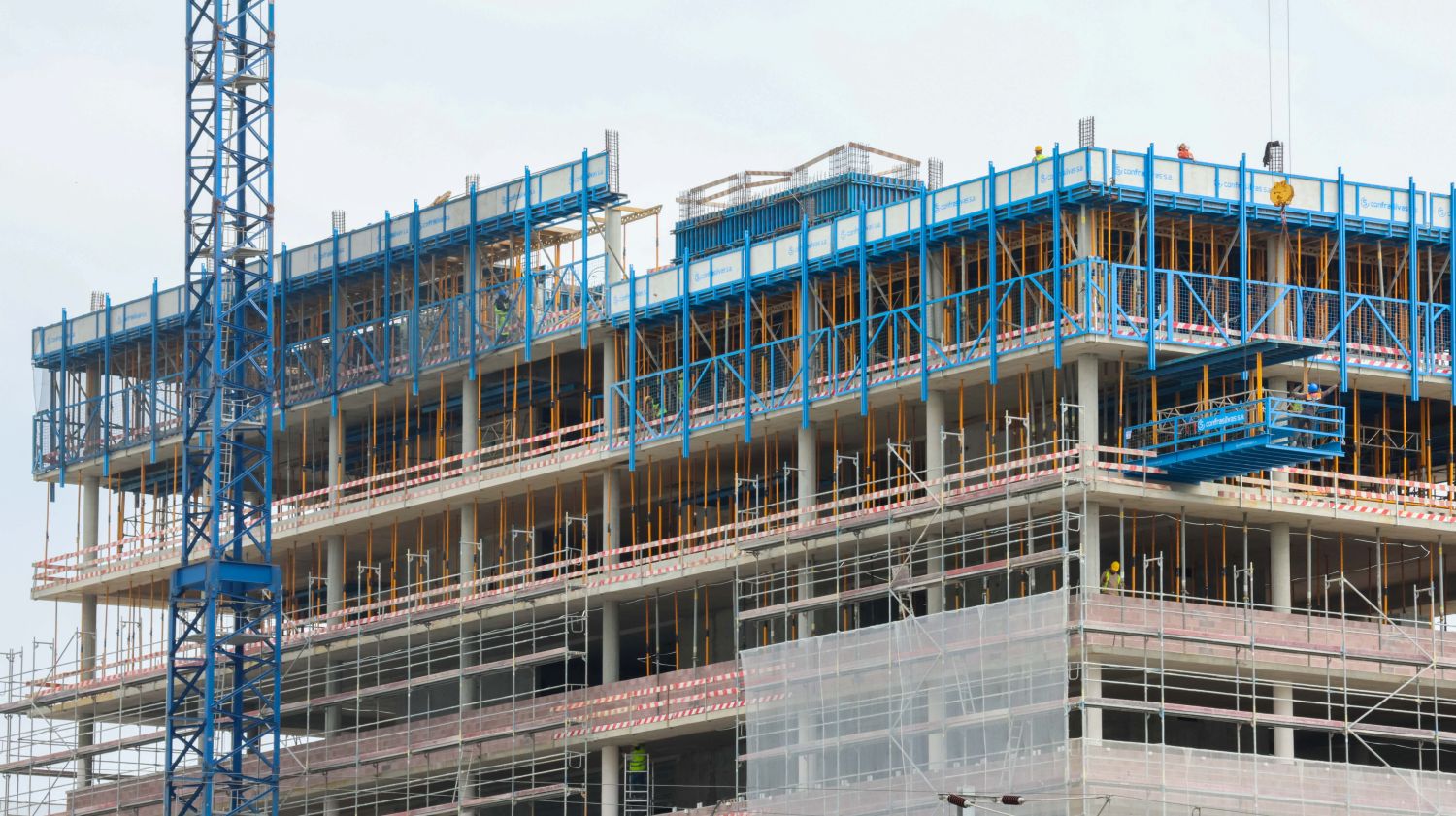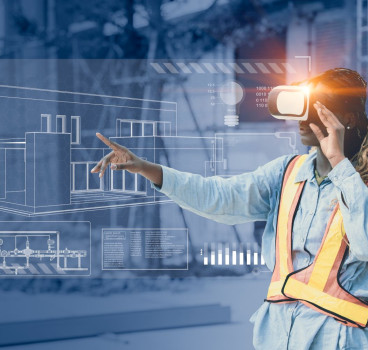How robotics and AI are revolutionising the scaffolding industry
As the construction industry moves towards a future defined by efficiency, safety and technological innovation, the very nature of scaffolding is undergoing a profound transformation. We are witnessing the dawn of a new era, where robotics, smart systems and radically different access solutions are poised to redefine how we build, literally from the ground up, writes John Ridgeway.
The traditional tube and clamp system, while robust and versatile, comes with inherent challenges. Its erection and dismantling are time-consuming, labour-intensive and carry significant safety risks. The weight of materials, the need for extensive training and the logistical complexities of moving vast quantities of steel or aluminium across busy sites are constant headaches for project managers.
Moreover, the sheer volume of scaffolding materials contributes to a substantial environmental footprint. But what if scaffolding could be smarter? What if it could assemble itself, adapt to changing needs, or even become an integral, intelligent part of the building process? These are the questions driving the innovations set to reshape the way we build.
We could soon see construction sites where the most dangerous and repetitive tasks of scaffolding erection are handled not by humans, but by precision-engineered robots. This is not science fiction - it's a rapidly approaching reality. Automated scaffolding systems represent perhaps the most radical departure from traditional methods.
One of the most promising avenues in this space involves semi-autonomous or fully autonomous robotic units capable of handling and connecting scaffolding components. These robots, equipped with advanced sensors, LiDAR and AI algorithms, can navigate complex construction environments, identify optimal connection points and precisely assemble sections of scaffolding. This not only dramatically reduces the risk of falls and injuries to human workers, but also significantly accelerates the erection process.
Companies are already investing heavily in this area. We're seeing prototypes and early-stage deployments of robotic systems designed for tasks like lifting heavy beams, securing clamps, and performing initial safety checks. While full automation for complex, multi-story scaffolding is still in its nascent stages, the incremental adoption of robotic assistance for specific, high-risk tasks is already yielding dividends in safety and efficiency. This could involve wearable robotics that augment human strength for lifting, or collaborative robots (cobots) working alongside human teams to streamline the assembly line for modular scaffolding units.
The potential benefits extend beyond safety. Robotics offer unparalleled precision, reducing errors in assembly that can lead to structural instability. They can operate in hazardous conditions (e.g., extreme weather, contaminated sites) where human presence would be dangerous or impossible. Furthermore, the ability of robots to work continuously, without fatigue or breaks, could dramatically cut project timelines, leading to significant cost savings.
Scaffolding that builds itself
The concept of self-erecting scaffolding is revolutionising access solutions, particularly for high-rise construction. This technology essentially integrates the scaffolding's structural components with a hydraulic or mechanical lifting system, allowing the entire structure to ascend or descend independently as the building progresses.
The most prominent examples of self-erecting systems are climbing or self-climbing scaffolding platforms. These systems are anchored to the building structure itself and use hydraulic jacks or winches to lift themselves to the next level. As a floor is completed, the platform is raised, providing a continuous, secure working environment for the subsequent floor. This eliminates the need for repeated dismantling and re-erection of conventional scaffolding from the ground up.
The advantages of self-erecting systems are numerous. Such continuous access means that workers always have a stable, full-height working platform, increasing productivity and safety. Since the scaffolding "climbs" with the building, there's less need for extensive ground-based scaffolding, freeing up valuable space on crowded urban sites.

In addition, the integrated nature of the system reduces the risk of falls associated with traditional assembly methods. Enclosed platforms often provide better weather protection, reducing the impact of wind and rain on worker safety and comfort. The ability to move the entire working platform quickly and efficiently between levels, also drastically speeds up construction cycles. Furthermore, while the initial investment might be higher, the long-term savings in labour, rental costs for traditional scaffolding and accelerated project completion can be substantial.
These systems are particularly well-suited for high-rise towers, bridge construction and any project where continuous vertical access is required over extended periods. Variations include mast climbing work platforms (MCWPs), which offer flexible vertical access for various tasks and can be tailored to building facades and heavy-duty climbing formwork, which integrates both access and concrete pouring capabilities.
New access solutions
The innovation in scaffolding is not just confined to automating current methods or making them self-propelled. A new generation of access solutions is emerging that challenges the very definition of scaffolding, often using advanced materials, digital integration and unconventional design principles.
Highly standardised, lightweight and easily assembled modular units are also becoming more prevalent. These can be quickly snapped together, often with fewer specialised tools, reducing both erection time and potential for error.
While not directly part of the scaffolding process, drones are also becoming indispensable access solutions for inspection and data collection instead of sending workers up. High-resolution cameras, thermal imaging, and LiDAR mounted on drones can quickly and safely assess structural integrity, track progress, identify defects and create detailed 3D models, reducing the need for human presence in dangerous or inaccessible areas. This complements scaffolding by ensuring its integrity and verifying work done from it.
Before a single tube is laid, AR and VR are further revolutionising scaffolding planning and training. Designers can create hyper-realistic virtual models of the scaffolding structure overlaid onto the digital twin of the building. This allows for precise planning, identification of clashes, optimisation of material use and simulation of erection processes, reducing costly mistakes on site. For training, VR simulations can immerse workers in realistic scaffolding scenarios, allowing them to practice assembly and safety protocols in a risk-free environment.
Going beyond basic scaffolding, specialised robots are being developed to perform tasks directly on building facades, often designed to cling to the structure itself. These "building crawlers" can conduct window cleaning, facade inspection, repair and even painting, reducing the long-term reliance on temporary access platforms. While not strictly scaffolding, they offer an alternative for ongoing maintenance.
Research into new, lighter, stronger, and more sustainable materials for scaffolding is also ongoing. Carbon fibre composites, advanced aluminium alloys and even recycled plastics are being explored to reduce weight, improve transportability and minimise the environmental impact of scaffolding materials.
The drivers of change
Several powerful forces are converging to accelerate this transformation in scaffolding. Falls from height, for example, remain a leading cause of fatalities and serious injuries in construction. Any innovation that reduces human exposure to elevated risks is to be highly prioritised.
The pressure to deliver projects faster, more affordably and with fewer delays is constant. Automated and self-erecting systems offer significant time and labour savings. As the construction workforce ages and fewer young people enter traditional trades, automation also offers a solution to filling labour gaps for repetitive or high-risk tasks. Furthermore, as cities grow denser and buildings become more complex and taller, traditional scaffolding becomes increasingly impractical and inefficient, necessitating more advanced solutions.
However, despite the exciting prospects, the transition to this new era of scaffolding will face challenges. Advanced robotic and self-erecting systems often require significant upfront capital investment and the workforce will need new skills to operate, maintain and supervise these advanced systems. Existing safety regulations may also need to evolve to accommodate these new technologies and methodologies.
We can see therefore, that the future of scaffolding is not about entirely abandoning the tube and clamp, but rather about augmenting, transforming and ultimately transcending it. Traditional scaffolding will likely remain relevant for smaller, simpler projects for some time. However, for large-scale, complex and high-rise construction, the tide is turning rapidly towards more intelligent, automated and integrated access solutions.
Additional Blogs

Are architects losing their influence in the digital era?
For decades, architects have been the central creative force in construction, shaping the buildings we see and the way projects are conceived, communicated and delivered. Their role has been...
Read moreWhy the word “Innovation” has lost its meaning in construction
“Innovation” has become one of the most overused terms in construction. It appears in the dozens of press releases we receive each day, conference talks and project reports, often without any real...
Read more

Retrofit fatigue and are we asking too much of old buildings?
As the world pushes toward net-zero emissions, the pressure to decarbonise our built environment is more intense than ever. Governments, developers and building owners are investing heavily in energy...
Read more